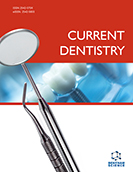
Full text loading...
We use cookies to track usage and preferences.I Understand
Objective: This study aimed to analyze the presence of lesions in the skull and face and the associated factors in pedestrian victims of traffic accidents.
Methods: A cross-sectional, descriptive-analytical study carried out through the analysis of medical records of pedestrian victims of traffic accidents in an emergency service in the city of Campina Grande, Brazil, during the year of 2016. Information was collected regarding gender, age group, day of the week, time of the accident, type of vehicle involved, presence of trauma to the skull and face, and outcomes. The Chi-square and Fisher's Exact tests were used, with a significance level of 5%.
Results: A total of 1,884 medical records were evaluated, out of which 7.1% (n = 133) involved pedestrians. Men were the most frequent victims (68.4%), and victims of age 60 years old or over (30.5%) predominated. Almost one-third of the cases were recorded during the weekends (30.5%), and the most prevalent time was at night (52.7%). Regarding the type of vehicle involved, motorcycles predominated (47.4%). Head trauma was present in 37.6% of victims, while facial injuries corresponded to 8.2%. In 12% of cases, the victims died. The variables of gender, age group, occurrence on weekends, and trauma to the face showed a statistically significant association with the occurrence of traffic accidents (Chi-square test; p<0.05).
Conclusion: Among pedestrian victims of traffic accidents, there is a predominance of men aged 65 years or over. Accidents are frequent at night, and motorcycles are the main vehicles involved. The presence of trauma to the skull and face regions is high.

Article metrics loading...

Full text loading...
References


Data & Media loading...

